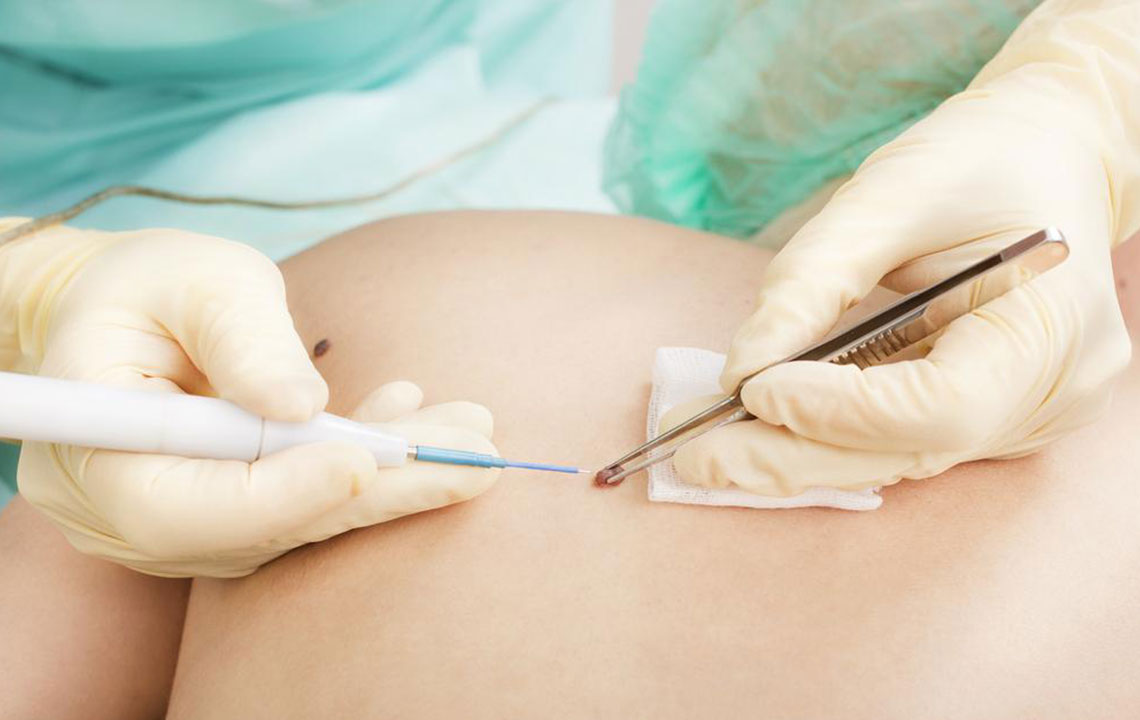Melanoma Screening and Diagnosis
Your best way to find melanoma early is by conducting a regular self-check of your skin’s surface. Most of us have moles and freckles, however, if you notice a mole or freckle looks differently (i.e., raised skin, flaking, change in shape, painful to touch, etc.) it’s worth getting checked out by a doctor. An annual skin exam is wise for those who like to be out in the sun, or for individuals with light skin who have numerous moles and skin markings.

To conduct an at home, self-check of your skin…
Conducting a self-skin exam
Use a mirror to inspect any moles, freckles, or birthmarks that have changed, particularly in these areas:
- Back
- Shoulders
- Neck
- Chest and torso
- Scalp
- Face
- Both arms – front and back
- Groin
- Legs – front and back
- Hands and Feet – top and bottom sides and between fingers and toes, as well as under the nails
Melanoma biopsies
Family physicians will conduct a similar skin check, however, they may order a biopsy if they’re concerned about a certain area of skin, if you tan regularly, or if skin cancer runs in your family. A doctor may order one of the several biopsies to screen a potential melanoma, including:
- Punch biopsy
This skin biopsy uses a surgical tool with a circular blade to remove a round sample of an abnormal mole for analysis. - Optical biopsy
Uses a method called “reflectance confocal microscopy” (or RCM) to take a skin sample. No cutting is required. - Tangential biopsy
Also known as a shave biopsy, the top layer of skin is shaved away with a surgical blade. Bleeding may occur so sometimes the doctor will cauterize the biopsy zone. - FNA biopsy
Also known as fine needle aspiration, this biopsy takes a sample via a thin, hollow needle with the help of a CT scan. It’s often used for suspicious moles deep in the body to see if cancer has spread to the lymph nodes. - Incisional biopsy
This test takes an irregular portion of a suspect large mole or growth for laboratory testing. - Sentinel and Surgical biopsies
These techniques are used on later stage melanoma patients to test for the spread of cancer to the lymph nodes. Sentinel node biopsies injecting dye into the skin and trace its flow to the lymph nodes. Suspect lymph nodes are then removed and tested in the lab for cancer. Surgical biopsies also remove suspect lymph nodes using a local anesthetic.




